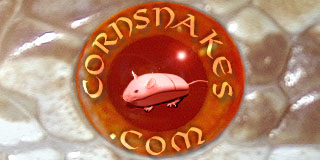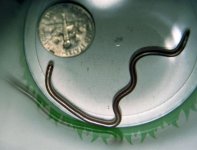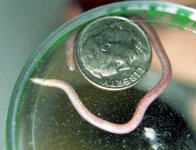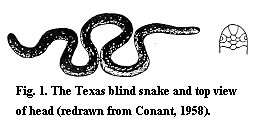glenhead
Elder curmudgeon
We've found a couple of these running around the house. This was the first one, in September 2007. When I first saw it, it was lying still on the carpet, and I thought it was an earthworm. When I touched it, it started sidewinding across the floor - definitely not normal earthworm performance! In 36 years of snake hunting, I'd never even heard of these things, much less seen one (kind of embarrassing, but there ya go) and I took a couple of shots of it. The one from above (the darker side of the snake) is pretty cruddy, but you can make out the vestigial eyes on the head (next to the dime).
These critters can sense light and dark, but that's about it. They hunt by smell, and will follow the scent trail of ants (their main source of nutrition) back to the mound, then work their way down to the nurseries to eat the eggs and larvae. Their scales fit together so closely that the ants can't do them any damage. From the field guide, I have the impression that this one isn't an adult. They supposedly top out at eight inches (20cm) or so. This one is just under 3-1/2 inches (8.5cm).
These critters can sense light and dark, but that's about it. They hunt by smell, and will follow the scent trail of ants (their main source of nutrition) back to the mound, then work their way down to the nurseries to eat the eggs and larvae. Their scales fit together so closely that the ants can't do them any damage. From the field guide, I have the impression that this one isn't an adult. They supposedly top out at eight inches (20cm) or so. This one is just under 3-1/2 inches (8.5cm).




